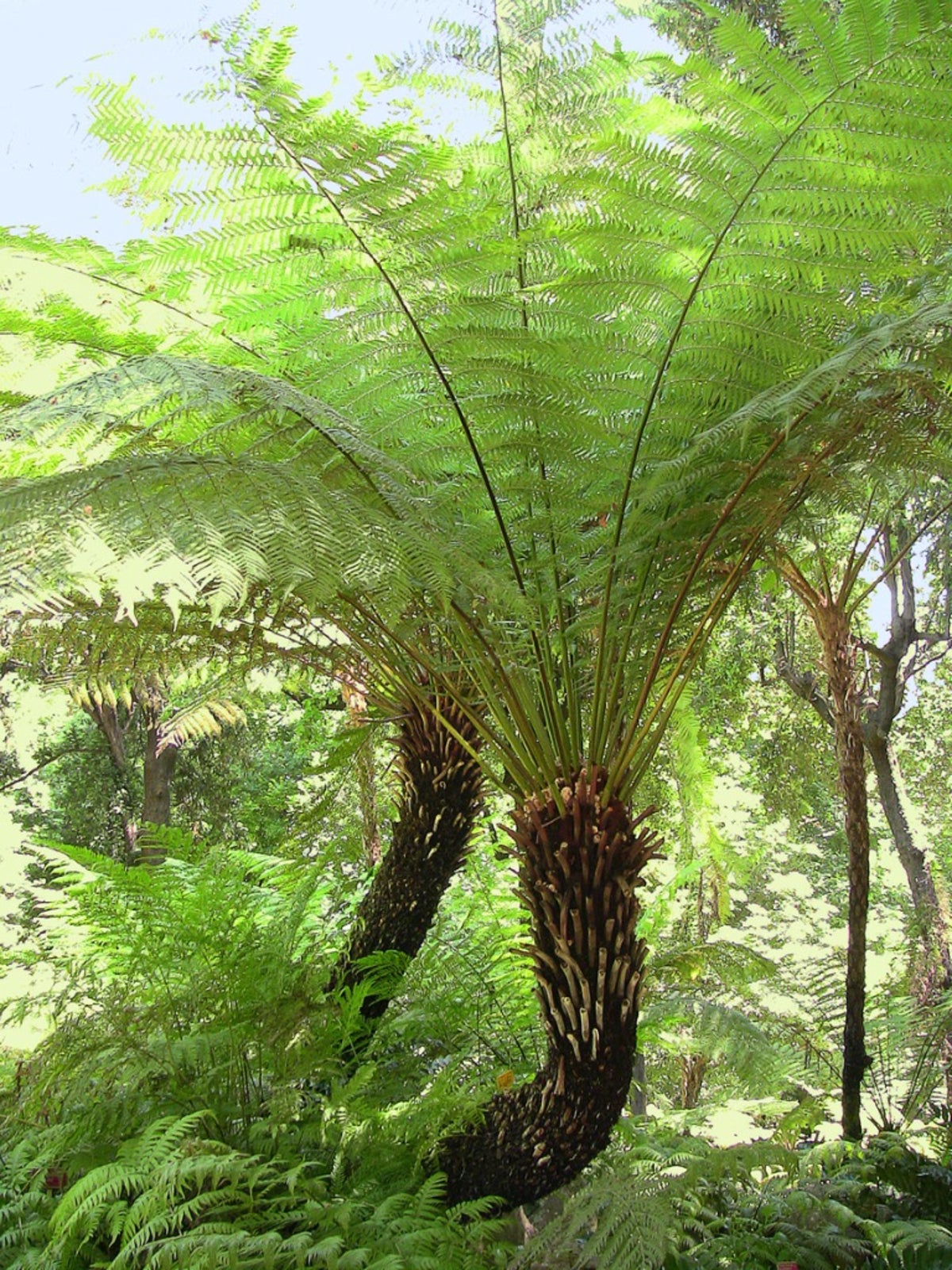What Is A Tree Fern: Different Fern Tree Types And Planting Tree Ferns


Australian tree ferns add tropical appeal to your garden. They look especially nice growing beside a pond where they create the atmosphere of an oasis in the garden. These unusual plants have a thick, straight, woolly trunk topped with large, frilly fronds.
What is a Tree Fern?
Tree ferns are true ferns. Like other ferns, they never flower or produce seeds. They reproduce from spores that grow on the undersides of the fronds or from offsets. A tree fern's unusual trunk consists of a thin stem surrounded by thick, fibrous roots. The fronds on many tree ferns remain green throughout the year. In a few species, they turn brown and hang around the top of the trunk, much like palm tree leaves.
Planting Tree Ferns
Growing conditions for tree ferns include moist, humus-rich soil. Most prefer partial shade, but a few can take full sun. The species vary on their climate requirements, with some needing a frost-free environment while others can tolerate a light to medium frost. They need a climate with high humidity to keep the fronds and trunk from drying out. Tree ferns are available as containerized plants or as lengths of trunk. Transplant containerized plants at the same depth as in their original contained. Plant lengths of trunk just deep enough to keep them stable and upright. Water them daily until fronds emerge, but don't feed them for a full year after planting. You can also pot up the offsets that grow at the base of mature trees. Remove them carefully and plant them in a large pot. Bury the base just deep enough to hold the plant upright.
Additional Tree Fern Information
Due to their unusual structure, tree ferns need special care. Since the visible part of the trunk is made of roots, you should water the trunk as well as the soil. Keep the trunk moist, especially during hot weather. Fertilize tree ferns for the first time one year after planting. It's okay to apply a slow-release fertilizer to the soil around the trunk, but the fern responds best to a direct application of liquid fertilizer. Spray both the trunk and the soil monthly but avoid spraying the fronds with fertilizer. Spaeropteris cooperii needs a frost-free environment, but here are some fern tree types that can take a little frost:
- Soft tree fern (Dicksonia antartica)
- Golden tree fern (D. fibrosa)
- New Zealand tree fern (D. squarrosa)
In areas that get lots of frost, grow tree fern in containers that you can bring indoors for winter.
Sign up for the Gardening Know How newsletter today and receive a free copy of our e-book "How to Grow Delicious Tomatoes".

Jackie Carroll has written over 500 articles for Gardening Know How on a wide range of topics.